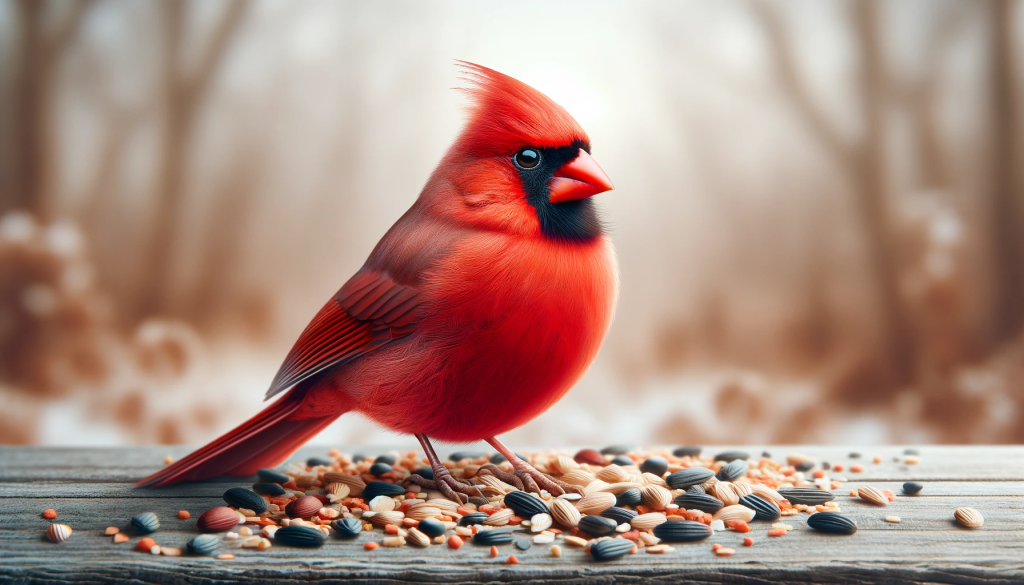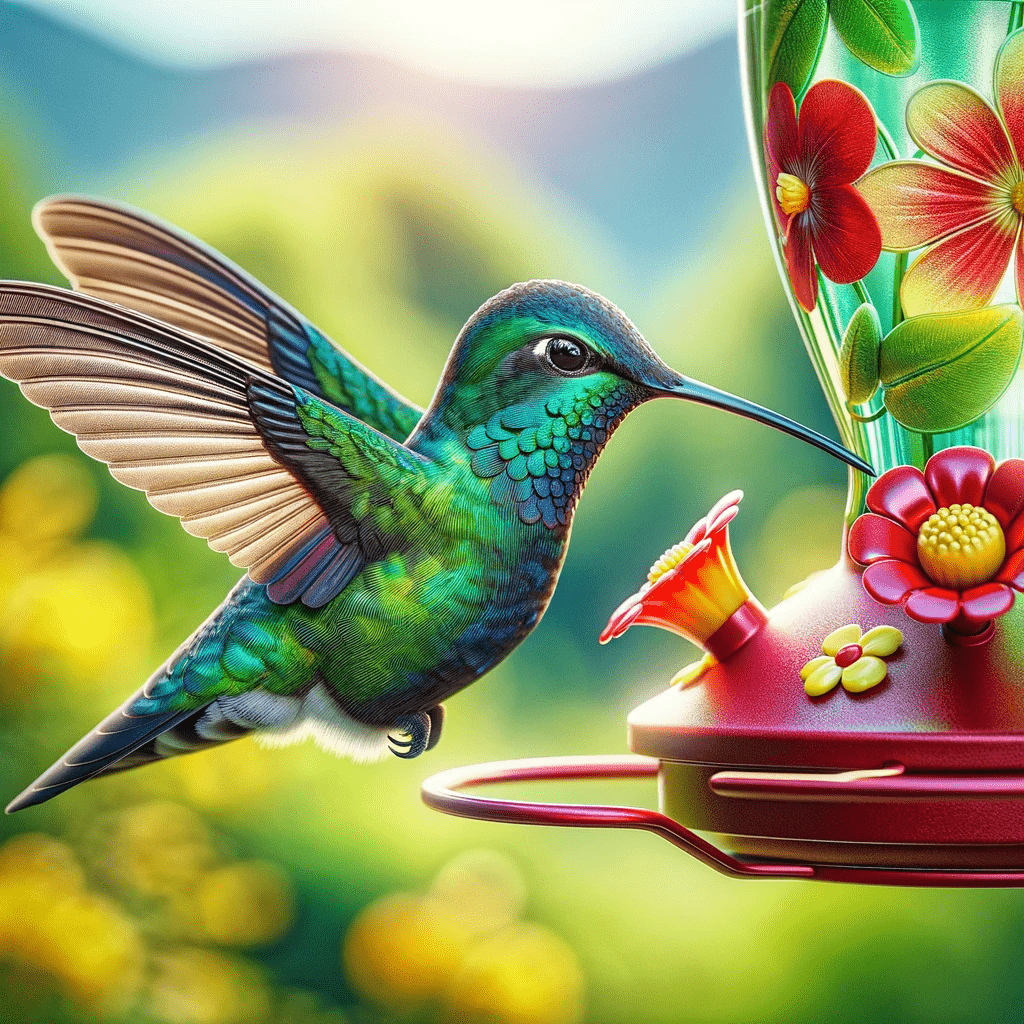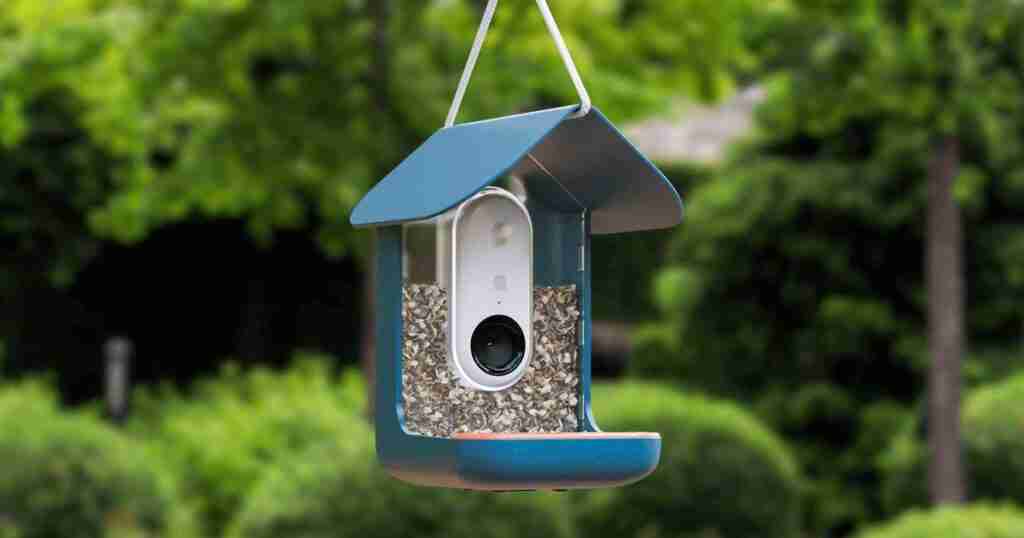If you’re looking to add some vibrant life to your backyard, attracting birds to your bird feeder is a fantastic way to do it! In this article, we’ll be sharing with you the top 10 birds that commonly visit bird feeders, along with tips on how to attract them. From the tiny, colorful hummingbirds to the charismatic blue jays, we’ll cover a wide variety of birds that will surely make your backyard a haven for feathered friends. So get ready to welcome a symphony of chirps and melodies as we dive into the world of backyard bird feeding.
If you’re a bird enthusiast or simply enjoy having wildlife visit your backyard, attracting birds to your bird feeder is a great way to bring life and color to your outdoor space. There are countless bird species that you can attract, but in this article, we will focus on the top 10 birds that are commonly found at backyard bird feeders. From vibrant cardinals to energetic hummingbirds, these birds will surely bring joy to your day. So, let’s dive into the fascinating world of these feathered friends and explore how you can attract them to your backyard.
1. Cardinal
– Physical Description
The first bird on our list is the beautiful cardinal. Cardinals are known for their striking red plumage, which makes them easily recognizable. Male cardinals have bright red feathers all over their bodies with a distinctive black mask on their faces. Females, on the other hand, have a more muted brownish-red color with hints of red on their crest, wings, and tails.
– Habitat and Range
Cardinals are native to North America and can be found throughout the United States and parts of Canada. They are particularly common in woodland areas, parks, and suburban gardens. Cardinals are not migratory birds, so you can enjoy their presence in your backyard all year round.
– Diet and Feeding Habits
Cardinals are primarily seed eaters, but they also consume insects and fruits. Sunflower seeds, safflower seeds, and cracked corn are some of their favorite foods. They are ground feeders and prefer feeding on low platforms or trays rather than hanging feeders. Cardinals are known to be messy eaters, so it’s a good idea to provide them with ample space and a feeder that is easy to clean.
– How to Attract Cardinals to Your Backyard Bird Feeder
To attract cardinals to your backyard, offer a variety of their preferred foods such as black oil sunflower seeds, safflower seeds, and cracked corn. Place your feeder in a quiet area with nearby shrubs or trees, providing cover for the birds to retreat to when they feel threatened. Consider offering a low platform or tray feeder as cardinals prefer to feed on the ground. Providing fresh water for drinking and bathing will further entice cardinals to visit your feeder.
2. Blue Jay
– Physical Description
Another beautiful bird that you can attract to your backyard bird feeder is the blue jay. With its vibrant blue plumage, white underparts, and distinctive crest, the blue jay is hard to miss. It also has black markings on its face and wings, adding to its striking appearance.
– Habitat and Range
Blue jays can be found throughout North America, from Canada to Florida and as far west as Texas. They inhabit a variety of habitats, including deciduous and coniferous forests, parks, and suburban areas. Blue jays are also known to be common visitors to backyard bird feeders.
– Diet and Feeding Habits
Blue jays have a diverse diet that includes seeds, nuts, insects, fruits, and even small vertebrates. They are known to cache food for later consumption, which can be anything from acorns and nuts to insects. Blue jays are social birds and often join other backyard bird feeder visitors in search of food.
– How to Attract Blue Jays to Your Backyard Bird Feeder
To attract blue jays, provide a variety of foods such as peanuts, sunflower seeds, and suet. Blue jays are larger birds, so opt for a sturdy feeder that can accommodate their size. Placing the feeder in a quiet area with nearby trees or shrubs will give blue jays a sense of security. Consider offering a bird bath or water feature for them to drink and bathe in.

3. Chickadee
– Physical Description
With their small size and charming appearance, chickadees are a favorite among bird enthusiasts. The most common species in North America is the black-capped chickadee. They have a black cap and bib, white cheeks, gray wings, and a white underbelly.
– Habitat and Range
Chickadees can be found in a variety of habitats, including woodlands, forests, parks, and even suburban areas. They are year-round residents in many regions of North America, so you can expect to see them at your feeder throughout the year.
– Diet and Feeding Habits
Chickadees are primarily insectivorous but also consume seeds and berries. They are known to be acrobatic and can hang upside down while foraging for food. Chickadees have a fondness for sunflower seeds, suet, and peanut butter. They are frequent visitors to backyard feeders, often forming small flocks with other bird species.
– How to Attract Chickadees to Your Backyard Bird Feeder
To attract chickadees, offer a variety of foods such as sunflower seeds, suet, and mealworms. Chickadees are social birds, so providing multiple feeding stations or feeders will accommodate their flocking behavior. Place the feeder near shrubs or trees to give them a sense of security. Adding a water source such as a birdbath will further entice chickadees to visit your backyard.
4. Sparrow
– Physical Description
Sparrows are a diverse group of birds with many different species. They come in various colors and patterns, but most sparrows have small, stout bodies and short tails. The house sparrow, for example, has a brownish-gray body, a black bib, and a reddish-brown back.
– Habitat and Range
Sparrows can be found across North America, with some species being more common than others in certain regions. They inhabit a wide range of habitats, including grasslands, woodlands, urban areas, and farmlands.
– Diet and Feeding Habits
Sparrows are primarily seed eaters, but they also consume insects and fruits. They are opportunistic feeders and adapt well to a variety of food sources. Offering a mix of seeds such as millet, sunflower, and cracked corn will attract sparrows to your feeder. They are ground feeders, so placing seed on the ground or providing a low platform feeder will make it easier for them to access the food.
– How to Attract Sparrows to Your Backyard Bird Feeder
To attract sparrows, offer a variety of seeds and grains such as millet, sunflower, and cracked corn. Ground feeding is preferred by sparrows, so consider providing a low platform or tray feeder. Placing the feeder in a quiet area with nearby shrubs or bushes will give sparrows a safe, sheltered space to feed.
5. Nuthatch
– Physical Description
Nuthatches are small, agile birds with unique characteristics. They have strong, pointed beaks that they use to pry open seeds and insects. Most nuthatch species have a blue-gray back, white underparts, and a distinctive black eyestripe.
– Habitat and Range
Nuthatches are mainly found in wooded areas across North America. They are known for their ability to move head-first down tree trunks, thanks to their strong legs and agile feet. In addition to woodlands, nuthatches can also be found in parks, gardens, and even urban areas.
– Diet and Feeding Habits
Nuthatches are primarily insectivorous but also feed on nuts and seeds. They have a knack for wedging food items into tree bark and using their strong beaks to hammer them open. Providing suet, peanuts, and sunflower seeds will attract nuthatches to your feeder.
– How to Attract Nuthatches to Your Backyard Bird Feeder
To attract nuthatches, offer a variety of foods such as suet, peanuts, and sunflower seeds. Nuthatches are known to be acrobatic climbers, so a suet feeder or a feeder with a larger platform will be appealing to them. Placing the feeder near trees or providing perching spots will allow nuthatches to feel at ease. Adding a bird bath or water feature will also entice them to visit your backyard.

6. Goldfinch
– Physical Description
Goldfinches are small, colorful birds that add a vibrant touch to any backyard. The American goldfinch, for example, has bright yellow plumage during the summer breeding season. Male goldfinches have a striking black cap and wings, while females have a more muted olive-brown color.
– Habitat and Range
Goldfinches can be found in most of North America, from southern Canada to Mexico. They inhabit a variety of habitats, including meadows, fields, gardens, and even urban areas. Goldfinches are migratory birds, so their presence at your feeder may change with the seasons.
– Diet and Feeding Habits
Goldfinches are primarily seed eaters and have a special preference for thistle and sunflower seeds. They have a unique feeding habit where they cling to flower heads or seed pods to extract the seeds. Goldfinches tend to feed in flocks, so providing multiple feeding stations or feeders will accommodate their social behavior.
– How to Attract Goldfinches to Your Backyard Bird Feeder
To attract goldfinches, offer a variety of seeds such as thistle and sunflower. Consider using a thistle or nyjer feeder, which has smaller holes to accommodate their small beaks. Placing the feeder in an open area with nearby perches will allow goldfinches to feed comfortably. Offering a fresh water source such as a birdbath will also attract them to your backyard.






7. Woodpecker
– Physical Description
Woodpeckers are known for their unique ability to drum on trees with their strong beaks. They have sturdy bodies, long bills, and strong neck muscles. Woodpecker species vary in color and pattern, with the downy woodpecker being a common visitor to backyard bird feeders. It has a black-and-white pattern with a small red patch on its head.
– Habitat and Range
Woodpeckers can be found in various habitats, including forests, woodlands, parks, and even suburban areas. They are distributed across North America, with different woodpecker species being more prevalent in different regions.
– Diet and Feeding Habits
Woodpeckers mainly feed on insects, but they also consume nuts, seeds, and fruits. They use their strong bills to peck into tree bark and locate hidden insects. Providing suet, peanuts, and sunflower seeds will attract woodpeckers to your feeder.
– How to Attract Woodpeckers to Your Backyard Bird Feeder
To attract woodpeckers, offer a variety of foods such as suet, peanuts, and sunflower seeds. Woodpeckers are known to cling to tree trunks, so a suet feeder or a feeder with a larger platform will be appealing to them. Placing the feeder near trees or providing perching spots will allow woodpeckers to feel comfortable. Adding a water source such as a birdbath will further entice them to visit your backyard.
8. Finch
– Physical Description
Finches are small, lively birds with a delightful presence. The house finch, for example, has a brownish color with streaks of red on its crown, breast, and rump. The male house finch has more vibrant red plumage than the female.
– Habitat and Range
Finches can be found in a wide range of habitats, including grasslands, woodlands, urban areas, and gardens. The house finch is particularly common in North America, with its range spanning from Mexico to southern Canada.
– Diet and Feeding Habits
Finches are primarily seed eaters and have a particular fondness for sunflower seeds. They also consume fruits and insects. Offering a variety of seeds such as black oil sunflower and nyjer (thistle) will attract finches to your feeder. Finches are known to feed in flocks, so providing multiple feeding stations or feeders will accommodate their social behavior.
– How to Attract Finches to Your Backyard Bird Feeder
To attract finches, offer a variety of seeds such as sunflower and nyjer. Consider using a nyjer feeder, which has smaller holes to accommodate their small beaks. Placing the feeder in an open area with nearby perches will allow finches to feed comfortably. Providing a fresh water source such as a birdbath will further entice them to visit your backyard.

10. Hummingbird
– Physical Description
Hummingbirds are fascinating creatures known for their iridescent plumage and their unique ability to hover in mid-air. There are several species of hummingbirds, each with its own distinct coloration and pattern. The ruby-throated hummingbird, for example, has a vibrant emerald green body with a ruby-red throat patch on males.
– Habitat and Range
Hummingbirds can be found in various habitats across the Americas, from Alaska to Argentina. They are particularly common in gardens and areas with abundant flowers, as they rely heavily on nectar as a food source.
– Diet and Feeding Habits
Hummingbirds have a specialized diet consisting primarily of nectar from flowers. They use their long, slender beaks to extract nectar from the center of flowers. In addition to nectar, hummingbirds also consume small insects and spiders for protein. Providing a hummingbird feeder with nectar is a great way to attract these tiny birds to your backyard.
– How to Attract Hummingbirds to Your Backyard Bird Feeder
To attract hummingbirds, provide a hummingbird feeder filled with a homemade nectar solution. The nectar can be made by dissolving four parts water with one part white granulated sugar. It’s important to avoid using honey or artificial sweeteners, as they can be harmful to hummingbirds. Hang the feeder in a visible location, preferably near flowers or plants that hummingbirds are known to be attracted to. It’s also crucial to clean and refill the feeder regularly to prevent the growth of mold or bacteria.
In conclusion, attracting birds to your backyard bird feeder can be a rewarding and enjoyable experience. By understanding the specific needs and preferences of different bird species, you can create an inviting environment that will attract a diverse range of feathered visitors. Whether it’s the vibrant red of a cardinal, the energetic presence of a blue jay, or the delicate beauty of a hummingbird, these birds will bring life and joy to your outdoor space. So, grab your binoculars, set up your feeders, and get ready to welcome a symphony of birds to your backyard!



